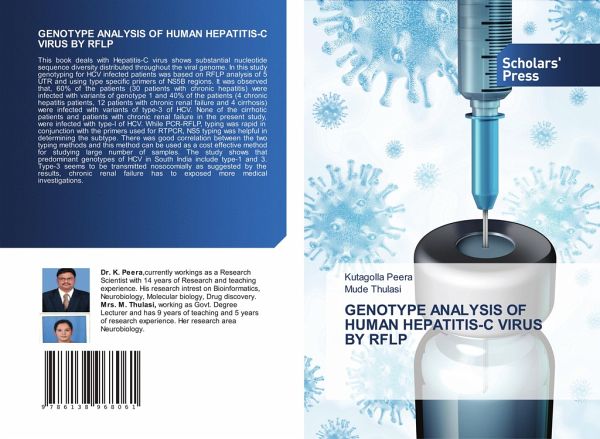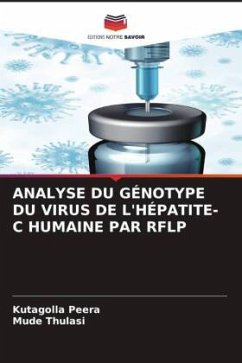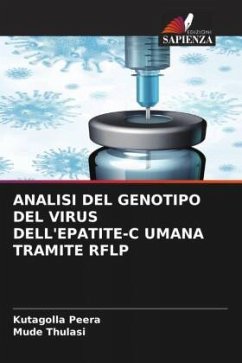
GENOTYPE ANALYSIS OF HUMAN HEPATITIS-C VIRUS BY RFLP
Versandkostenfrei!
Versandfertig in 6-10 Tagen
34,99 €
inkl. MwSt.

PAYBACK Punkte
17 °P sammeln!
This book deals with Hepatitis-C virus shows substantial nucleotide sequence diversity distributed throughout the viral genome. In this study genotyping for HCV infected patients was based on RFLP analysis of 5 UTR and using type specific primers of NS5B regions. It was observed that, 60% of the patients (30 patients with chronic hepatitis) were infected with variants of genotype 1 and 40% of the patients (4 chronic hepatitis patients, 12 patients with chronic renal failure and 4 cirrhosis) were infected with variants of type-3 of HCV. None of the cirrhotic patients and patients with chronic r...
This book deals with Hepatitis-C virus shows substantial nucleotide sequence diversity distributed throughout the viral genome. In this study genotyping for HCV infected patients was based on RFLP analysis of 5 UTR and using type specific primers of NS5B regions. It was observed that, 60% of the patients (30 patients with chronic hepatitis) were infected with variants of genotype 1 and 40% of the patients (4 chronic hepatitis patients, 12 patients with chronic renal failure and 4 cirrhosis) were infected with variants of type-3 of HCV. None of the cirrhotic patients and patients with chronic renal failure in the present study, were infected with type-l of HCV. While PCR-RFLP, typing was rapid in conjunction with the primers used for RTPCR, NS5 typing was helpful in determining the subtype. There was good correlation between the two typing methods and this method can be used as a cost effective method for studying large number of samples. The study shows that predominant genotypesof HCV in South India include type-1 and 3. Type-3 seems to be transmitted nosocomially as suggested by the results, chronic renal failure has to exposed more medical investigations.












